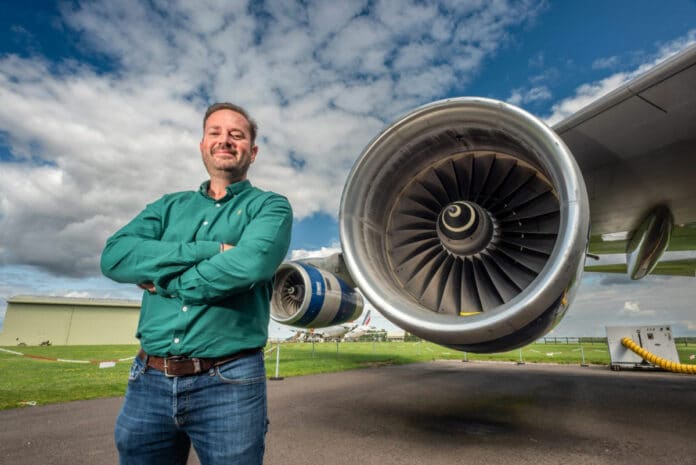Bristol-based company Firefly Green Fuels has developed a type of jet fuel made entirely from human sewage. Interestingly, independent tests by regulators in the aviation industry have also found that although the new fuel was chemically just like fossil-based kerosene, it has no fossil carbon; it’s a fossil-free fuel.
Aviation accounts for around 2.5% of global CO2 emissions. While this might seem like a small number, it is significant given that only a small proportion of individuals fly, and the industry is set to grow in the future. And taking carbon out of aviation is one of the hardest challenges.
Despite efforts to reduce carbon emissions from the aviation industry, transitioning to electric or hydrogen-powered planes will take many years. In the meantime, sustainable aviation fuels (SAF) are seen as a viable solution to enable the continued use of larger aircraft without contributing to global emissions.
Twenty years ago, James Hygate, Firefly Green Fuels CEO, began turning rapeseed oil into ‘bio-diesel’ for cars and trucks. His company now sells equipment to convert cooking oil into biodiesel all over the world. Hygate then shifted his focus to applying the same approach to jet engines.
The company researchers tried various sources of organic waste, such as cooking oil, food scraps, and crop residues, to produce a synthetic fuel, but none of them worked well enough. He then partnered with a chemist from Imperial College, London, Dr Sergio Lima, to experiment with human waste as starting material.
They developed a process that turns poo into a substance they call “bio-crude.” It looks and behaves like crude oil, but it’s made from waste products like agricultural scraps and human waste.
The process, hydrothermal liquefaction (HTL), uses a combination of high pressure and heat at lower energy levels and is good for processing wet wastes. Using HTL, the company turns sewage into crude oil and biochar.
Biochar is a good option for carbon sequestration in construction or in agriculture, where it can also be used as a soil improver. The crude oil, meanwhile, will be processed into sustainable aviation fuel (SAF), via proprietary processes derived from those used to synthesise fossil-derived jet fuels.
The bio-kerosene is being tested independently at the DLR Institute of Combustion Technology at the German Aerospace Center in collaboration with Washington State University. The future testing by the UK SAF (Sustainable Aviation Fuels) clearing House, based at the University of Sheffield, sounds promising as well.
The first results have shown that the fuel has a chemical composition nearly identical to that of A1 fossil jet fuel. Additionally, the £2m research grant awarded to the team by the UK Department of Transport is a great achievement.
According to Kima, SAF made from crop products is usually considered a better alternative and can deliver up to a 90% reduction in emissions compared to fossil fuels.
However, some oppose crop-based SAF, insisting that limited land be utilized to grow crops to address food security rather than jet fuel. Firefly’s approach is expected to be more acceptable as human waste is unavoidable, abundant, and unwanted. Hygate estimated that one London-New York flight would require the fuel produced from the annual sewage of 10,000 people. If all the UK’s sewage was processed, Firefly could supply 5% of the aviation fuel demand. This is still below the 10% target for SAF.
The company is working to build a full-scale demonstrator plant in the UK to develop this technology further.
